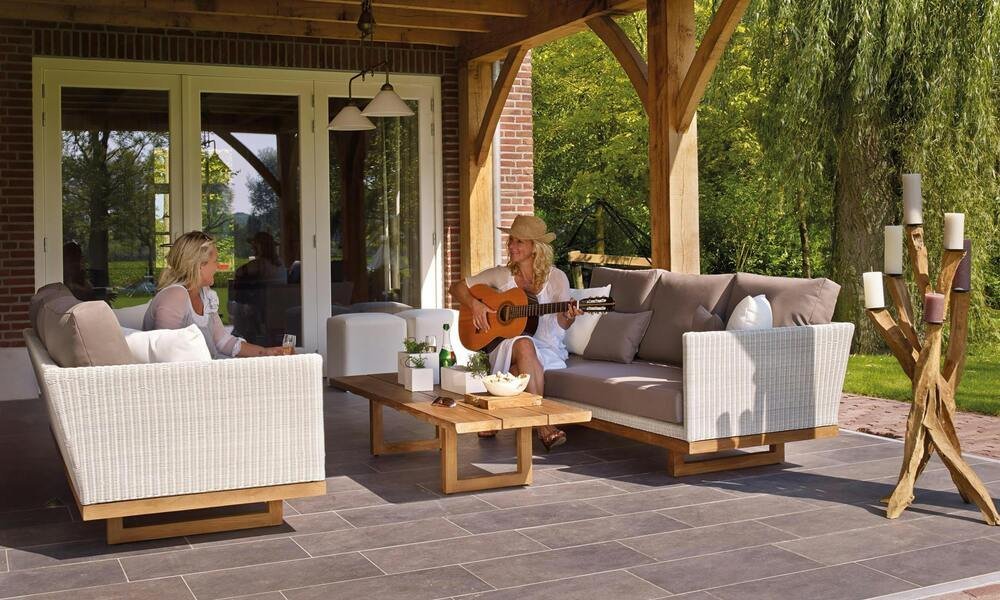Creating a minimalist outdoor space can transform your garden into a peaceful and simple retreat. Minimalism focuses on simplicity, functionality, and uncluttered design. In this guide, we’ll explore how to design a minimalist garden, keeping things easy and enjoyable.
Understanding Minimalism in Garden Design
Minimalism is all about keeping things simple. For your garden, this means fewer items and a focus on clean lines and open spaces. The goal is to create a space where you feel relaxed and free from clutter.
Key principles include:
- Simplicity: Use simple shapes and colors.
- Functionality: Every item should have a purpose.
- Less is More: Avoid overcrowding your space.
Minimalist garden design is not just about reducing the number of elements but also about creating a sense of order and tranquility. It’s about letting go of unnecessary items and focusing on what truly matters. This approach allows you to create a garden that is not only beautiful but also easy to maintain.
Planning Your Minimalist Garden
Before you start planting, plan your garden layout. Think about the space you have and how you want to use it. Sketch out your ideas to see what works best. Consider the following:
Space and Layout
Measure Your Space: Know the size of your garden to plan appropriately.
Define Zones: Create different areas for different uses, like a relaxation zone or a small dining area.
Flow and Movement: Ensure there is a clear path through the garden. This can be achieved with stepping stones, gravel paths, or simple paving.
Choose a Focal Point
Simple Feature: Select a standout item like a sculpture or a water feature. This will be the main focus of your garden.
Placement: Position your focal point where it can be seen from various angles. This will draw the eye and create a sense of harmony in the space.
Planning is crucial in minimalist design because it helps you decide what to include and what to leave out. This careful consideration leads to a more coherent and satisfying space.
Choosing Plants for a Minimalist Garden
Selecting the right plants is crucial for a minimalist garden. Go for plants that are easy to maintain and have simple shapes. Here are some tips:
Opt for Low-Maintenance Plants
Grasses: Ornamental grasses like Blue Fescue or Japanese Blood Grass.
Succulents: Echeveria or Aloe Vera are great for low maintenance.
Evergreens: Boxwood or Juniper provide structure and greenery all year round.
Perennials: Plants like lavender, sage, and other herbs can add texture and scent to your garden without requiring much upkeep.
Limit Variety
Few Types: Stick to a few types of plants to keep things simple.
Group Plants: Plant similar types together for a cohesive look. Repetition of plant types can create a sense of order and simplicity.
Seasonal Interest
Year-Round Appeal: Choose plants that offer something of interest in each season. This can include evergreen foliage, spring blossoms, summer flowers, and autumn color.
Layering: Use plants of different heights to create depth and interest without cluttering the space.
By carefully selecting plants that fit the minimalist aesthetic and are easy to care for, you can ensure that your garden remains beautiful and low-maintenance throughout the year.
Choosing Colors and Materials
A minimalist garden uses a limited color palette and simple materials. This helps keep the design clean and uncluttered.
Colors
- Neutral Tones: Use whites, greys, and beiges. These colors make the space feel open and calm.
- Greenery: Natural plant colors will complement neutral tones. You can also use different shades of green from various plants to add depth without overwhelming the space.
Materials
- Natural Stone: For pathways or patio areas, natural stone is a great choice. It’s durable and adds a natural, earthy feel to the garden.
- Wood: Simple wooden benches or decking add warmth and a natural element to the space. Choose woods like teak or cedar that are weather-resistant.
- Concrete: Use for modern, clean lines in pathways or planters. Concrete can be used in various forms, from smooth surfaces to textured finishes, providing versatility in design.
Textures
- Variety in Texture: Use different textures to add interest without adding clutter. This can include smooth concrete, rough stone, and soft wood.
- Balance: Ensure there is a balance between hard and soft textures. Too much of one can make the space feel either too harsh or too cluttered.
The right combination of colors and materials can significantly enhance the minimalist feel of your garden, making it both beautiful and functional.
Garden Features and Furniture
Choose garden features and furniture that fit the minimalist style. Keep things functional and avoid unnecessary items.
Furniture
- Simple Designs: Opt for clean lines and minimal decoration. Think of a sleek bench or a simple table.
- Comfortable Seating: Choose comfortable yet minimalist seating for relaxation. Materials like metal, wood, and simple fabrics work well.
- Multi-Functional Pieces: Consider furniture that serves more than one purpose, like a bench with storage underneath.
Features
- Water Features: A small, modern fountain can be a soothing addition. The sound of water can enhance the sense of calm in your garden.
- Lighting: Use simple, unobtrusive lighting to highlight key areas. Solar-powered lights or LED strips can be used to illuminate pathways or create a soft glow in seating areas.
- Planters: Simple, geometric planters can add to the minimalist look. Use them to define spaces or add height and interest.
Accessories
- Minimalist Art: A single piece of garden art, such as a sculpture, can serve as a focal point without overwhelming the space.
- Fire Pit: A simple fire pit can create a cozy atmosphere for cooler evenings. Choose a design that complements the clean lines of your garden.
Selecting the right features and furniture ensures that your garden remains functional and uncluttered, enhancing the overall minimalist aesthetic.
Maintaining Your Minimalist Garden
Maintaining a minimalist garden is easier because there are fewer items to care for. Here’s how to keep your space looking great:
Regular Cleaning
- Remove Debris: Keep pathways and surfaces clean. Regularly sweep or hose down to prevent buildup of dirt and leaves.
- Trim Plants: Regularly trim plants to maintain their shape and size. This keeps the garden looking neat and prevents overgrowth.
Seasonal Care
- Seasonal Plants: Choose plants that suit your local climate. This reduces the need for extra care and ensures your plants thrive.
- Mulching: Apply mulch to keep weeds down and maintain moisture. Mulch also adds a clean, finished look to garden beds.
Simplified Watering
- Efficient Irrigation: Use a drip irrigation system to water plants efficiently. This method reduces water waste and ensures that plants get the right amount of water.
- Rainwater Collection: Consider installing a rainwater collection system. This can provide a sustainable water source for your garden.
Regular maintenance is key to keeping your minimalist garden looking its best. The simpler design makes it easier to manage, allowing you to enjoy your space without spending too much time on upkeep.
Incorporating Personal Touches
Even a minimalist garden can reflect your personality. Add small, personal touches without cluttering the space.
Art Pieces
- Sculptures: A simple sculpture or modern art piece can add character. Choose something that resonates with you and fits the overall design.
- Planters: Minimalist planters can be both functional and decorative. They can also be used to add a pop of color or texture.
Textiles
- Cushions: Add a few simple cushions to your seating. Choose neutral colors or subtle patterns that complement the garden’s color scheme.
- Rugs: A small, neutral rug can define your seating area. Outdoor rugs can add comfort and a touch of elegance to your garden.
Lighting
- String Lights: Simple string lights can create a warm and inviting atmosphere. Use them to outline a seating area or drape them over a pergola.
- Lanterns: Minimalist lanterns can provide soft lighting and add a decorative touch. They can be placed on tables or hung from hooks.
Personal touches make your garden unique and enjoyable. They add character without compromising the minimalist aesthetic.
Case Studies: Minimalist Garden Examples
Let’s look at a few examples of minimalist gardens to inspire your design.
Urban Oasis
- Small Space: This garden uses a limited space efficiently. A single tree provides shade, while a simple bench offers a place to sit.
- Clean Lines: Straight paths and geometric shapes create a sense of order.
- Limited Plant Variety: A few types of plants are used, mainly succulents and grasses, which are easy to maintain.
Coastal Retreat
- Natural Materials: Driftwood, sand, and stone are used to create a natural, coastal feel.
- Open Spaces: Plenty of open space allows for relaxation and easy movement.
- Simple Furniture: Wooden benches and a small table provide functionality without clutter.
Modern Zen Garden
- Water Feature: A small, modern fountain serves as a focal point.
- Minimal Planting: A few carefully chosen plants add greenery without overwhelming the space.
- Raked Gravel: Gravel is used to create simple patterns, adding texture and interest.
These examples show how minimalist principles can be applied to different garden styles, from urban to coastal to zen.
DIY Projects for Your Minimalist Garden
Creating a minimalist garden doesn’t have to be expensive. Here are some DIY projects to help you design your space.
Build a Simple Bench
- Materials Needed: Wood, screws, and basic tools.
- Instructions: Measure and cut the wood to size, then assemble using screws. Sand and stain the wood for a polished look.
Create a Gravel Path
- Materials Needed: Gravel, landscape fabric, and edging.
- Instructions: Lay down the landscape fabric to prevent weeds, then spread the gravel evenly. Use edging to keep the gravel in place.
Make Your Own Planters
- Materials Needed: Concrete mix, water, and molds.
- Instructions: Mix the concrete according to the instructions, pour into molds, and let it set. Once dry, remove from molds and place in your garden.
Install a Drip Irrigation System
- Materials Needed: Drip irrigation kit, hose, and connectors.
- Instructions: Lay out the hose and connect the drip emitters to your plants. Attach to a water source and test the system.
DIY projects can add a personal touch to your garden while keeping costs down. They also allow you to customize your space to your liking.
Minimalist Garden Checklist
To ensure you’ve covered all aspects of your minimalist garden design, use this checklist:
- Plan Your Layout: Measure your space, define zones, and choose a focal point.
- Select Plants: Opt for low-maintenance plants and limit variety.
- Choose Colors and Materials: Stick to a neutral palette and use natural materials.
- Pick Furniture and Features: Keep designs simple and functional.
- Maintain Regularly: Clean, trim, and care for your garden to keep it looking its best.
- Add Personal Touches: Incorporate small, meaningful items without cluttering the space.
- Explore DIY Projects: Build simple garden features to save money and customize your space.
Following this checklist will help you create a beautiful and functional minimalist garden that you can enjoy year-round.
FAQs
What are the best plants for a minimalist garden?
For a minimalist garden, choose low-maintenance plants with simple shapes. Good options include ornamental grasses, succulents, and evergreens. These plants require less care and have clean lines that fit well with minimalist design.
How do I choose the right colors for a minimalist garden?
Stick to a neutral color palette for a minimalist garden. Whites, greys, and beiges create a calm and open space. You can also use different shades of green from plants to add natural color without overwhelming the design.
What materials are ideal for a minimalist garden?
Natural stone, wood, and concrete are excellent choices for a minimalist garden. These materials have clean lines and a simple appearance, which helps maintain the uncluttered look of the space.
How can I keep my minimalist garden easy to maintain?
A minimalist garden is easier to maintain because there are fewer plants and features. Regularly remove debris, trim plants to keep their shape, and choose low-maintenance plants that suit your climate. Mulch can also help with weed control and moisture retention.
Can I add personal touches to a minimalist garden without cluttering it?
Yes, you can add personal touches like simple art pieces, modern sculptures, or minimalist planters. Choose items that complement the clean lines and neutral palette of the garden without overwhelming the space.
What are some common mistakes to avoid in minimalist garden design?
Avoid overcrowding the space with too many plants or decorative items. Also, steer clear of bright, contrasting colors that can disrupt the calm and simple aesthetic. Stick to a limited color palette and focus on functionality to maintain a minimalist look.




